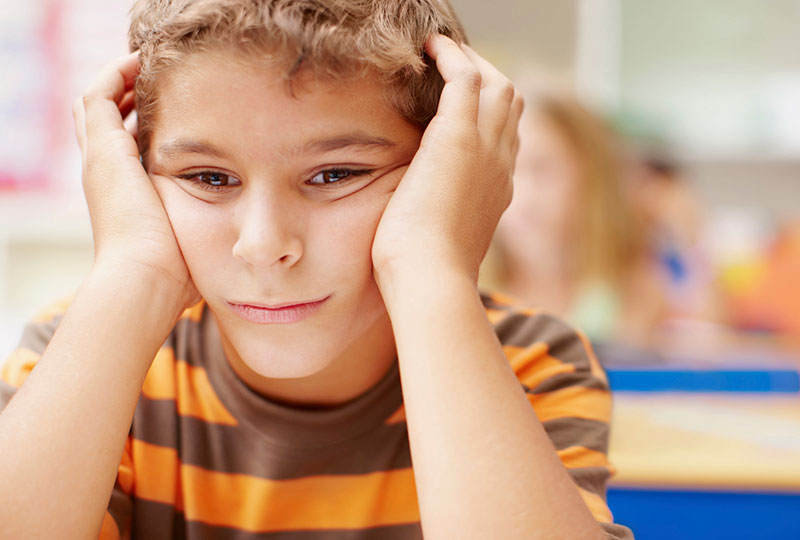Anxiety in children can be hard to detect. Learn how to tell the difference between normal nervousness and true anxiety.
During the school year, your kids might experience nervousness or worry over upcoming tests, sports tryouts or social events, but a perceived case of the butterflies might be something more serious if it persists or prevents a child from enjoying life. In these cases, you might have detected childhood anxiety.
Anxiety is actually the most common psychiatric problem affecting children and adolescents, but not the most common one seen in psychiatric clinics, says Margaret Benningfield, M.D., who specializes in anxiety disorders with Vanderbilt Behavioral Health.
Does your child have anxiety?
“The main thing that distinguishes normal nervousness or being shy from an anxiety disorder is when fears or worries get in the way of a child’s ability to function,” Benningfield explains. “For example, when kids start to have symptoms that cause them to avoid school or social activities, these are signs that treatment may be needed.”
Anxiety is a broad term, but the most common types of anxiety disorders in young people are separation anxiety, social anxiety and specific phobias. “The prevalence of different anxiety disorders differs with the age of the child,” Benningfield says.
How should you seek help for your child?
Benningfield recommends talking to your pediatrician or family doctor first or even a school counselor. However, if you continue to have concerns, reach out to a mental health professional like a therapist or psychiatrist.
What will happen on your first visit to a mental health professional?
Generally, the first visit will be at least an hour and may not include the child. “The therapist will want to know about the symptoms that caused them to seek help as well, as how the family gets along and what day-to-day life is like for the child and family,” Benningfield explains. “The therapist will also want to know about whether any other members of the family have similar symptoms and what the family has already tried to make things better.”
Ask about the therapist’s experience in a treatment called Cognitive Behavioral Therapy, an evidence-based approach that should be the first step to treating anxiety disorders, Benningfield adds.
What can you do at home?
“One of the most important things parents can do is to take good care of themselves,” Bennigfield says. That includes both physically and mentally. “Often, parents feel so overwhelmed dealing with the needs of a child who is ill that their own health suffers. In anxiety, we know that this makes things worse for the child.”
She recommends finding support — perhaps in a group — to talk about what is going on. “Parents can feel very isolated,” she says. “Other parents often don’t ‘get it,’ and that isolation makes things worse.”
Benningfield recommends the following resources:
Helping Your Anxious Child: A Step-by-Step Guide for Parents
What to Do When You Worry Too Much: A Kid’s Guide for Overcoming Anxiety


